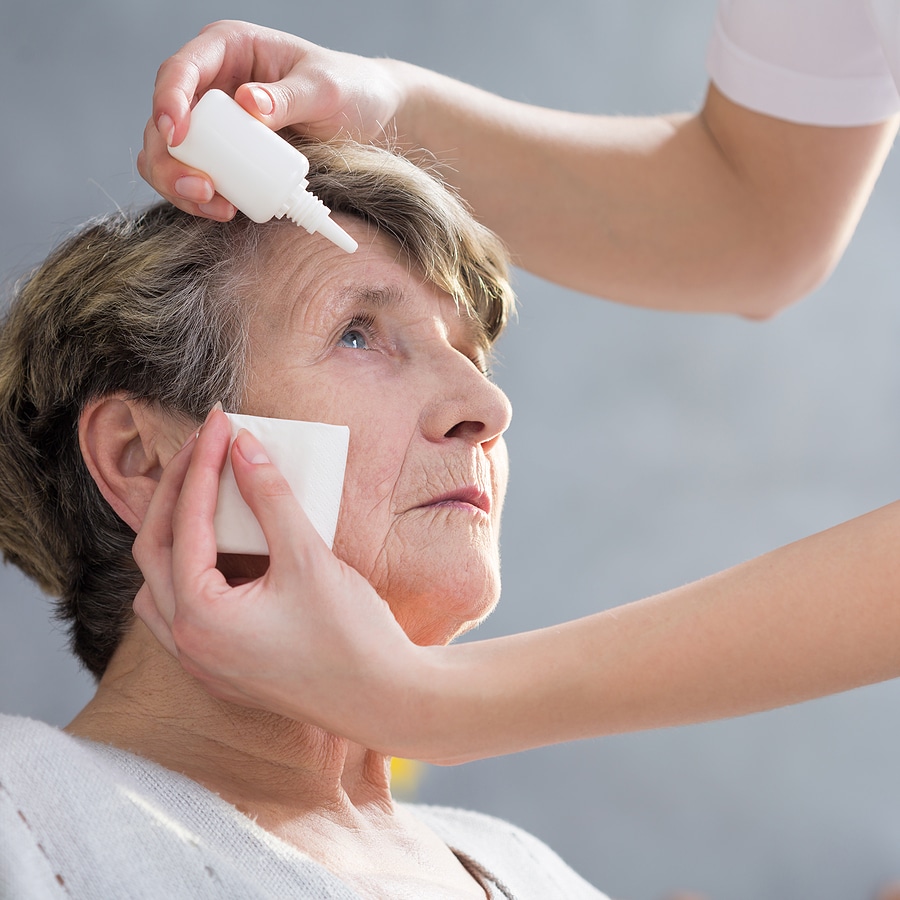February is AMD/Low Vision Awareness Month, a time dedicated to increasing understanding of age-related macular degeneration (AMD) and low vision. These conditions can significantly impact the quality of life for older adults, but with the right support, individuals can maintain independence and live comfortably at home.
Understanding Age-Related Macular Degeneration
Age-related macular degeneration is a leading cause of vision loss among people aged 50 and older. This condition affects the macula, the part of the eye responsible for sharp central vision. Over time, AMD can make it difficult to see details clearly, recognize faces, or perform everyday tasks like reading or cooking.
Risk Factors for AMD
While AMD cannot always be prevented, certain factors can increase the risk:
- Age: People over 50 are more likely to develop AMD.
- Smoking: Tobacco use has been linked to a higher likelihood of AMD.
- Family History: Genetics play a significant role in determining risk.
- Obesity: Excess weight can contribute to the progression of the disease.
- High Blood Pressure: Uncontrolled hypertension may impact eye health.
How AMD and Low Vision Affect Daily Life
For individuals living with AMD or low vision, day-to-day activities can become increasingly challenging. Tasks like reading prescription labels, preparing meals, or safely navigating the home may require extra effort or assistance. In addition to physical challenges, vision loss can lead to feelings of frustration or isolation.
How Senior Home Care Supports Individuals with AMD or Low Vision
Senior home care provides tailored solutions to help individuals with AMD or low vision maintain their independence and quality of life. Caregivers are trained to offer assistance in ways that prioritize safety, dignity, and comfort.
1. Assistance with Daily Activities
Home care professionals can help with tasks like meal preparation, medication management, and household organization. By ensuring that items are easily accessible and labeled appropriately, caregivers help reduce the stress of daily routines.
2. Fall Prevention and Home Safety
Vision loss increases the risk of falls. Caregivers assess the home for potential hazards, such as loose rugs or inadequate lighting, and implement solutions to create a safer living environment.
3. Transportation and Errands
For those unable to drive, senior home care provides transportation for doctor’s appointments, grocery shopping, and other errands, ensuring they can stay connected and independent.
4. Emotional Support
Living with vision loss can take an emotional toll. Caregivers offer companionship and a listening ear, helping to combat feelings of loneliness and frustration.
5. Promoting a Heart-Healthy Lifestyle
Since some risk factors for AMD, such as high blood pressure, are related to overall health, caregivers can assist with meal planning and physical activities that support wellness.
Why Awareness Matters
Raising awareness about AMD and low vision is an important step in ensuring seniors receive the care they need. Early diagnosis and proper support can make a significant difference in managing the effects of vision loss. At Residential Home Care, we understand the challenges faced by seniors with AMD or low vision and are here to provide compassionate, individualized support.
If you or an aging loved one are considering senior home care in Sugar Land, TX please contact the caring staff at Residential Home Care today at (281) 459-0769
Residential Home Care provides exceptional home care in Sugar Land, Greater Houston, Beaumont, Conroe, Huntsville, Lufkin, Livingston, Waco, Friendswood, Texas Hill Country, Austin, as well as Texas Gulf Coast, East Texas, North Texas, and Central Texas.
- Recognizing Alzheimer’s and Brain Awareness Month: Support That Matters - May 19, 2025
- What To Do Following a Cancer Diagnosis - May 5, 2025
- Stroke Awareness Month: How the FAST Method Can Help Save Lives - April 18, 2025



